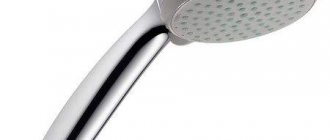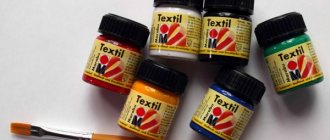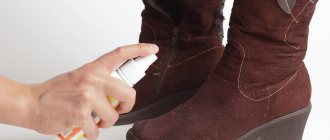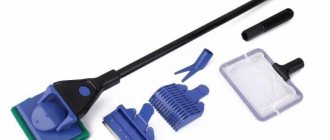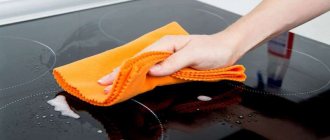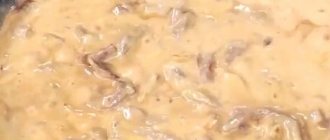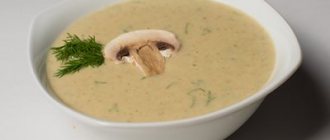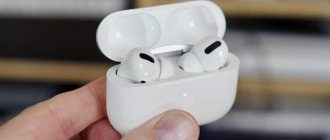Many housewives refuse to prepare tasty and satisfying dishes with champignons, butter mushrooms and honey mushrooms only because they do not know how to clean mushrooms or how to prepare them for further use. Some even have doubts about whether this should be done, because even in restaurants they serve food with products that have not removed the natural skin on the caps.
You really need to approach the preparation of mushroom appetizers by first understanding all the intricacies of processing the main component. Only if you do everything correctly can you count on creating an original and safe culinary masterpiece.
General rules and recommendations for cleaning mushrooms
Mushrooms are a perishable product. After cutting, they quickly become flabby and lose their aroma. It will not be possible to put the baskets somewhere away and remember about them after 3-4 days. In addition, worms from already damaged specimens quickly move to still clean ones.
It is advisable to clean and process the collected mushrooms on the same day.
Basic tips for cleaning mushrooms:
- Start cleaning mushrooms while still in the forest, removing large debris - stuck twigs, needles, leaves. The base is cleared of sand and earth. You can cut off a little to check if the mushroom is wormy, and not take home something that you still have to throw away.
- Sort them out. Different types clean differently.
- It is more convenient to peel mushrooms with a small sharp knife with a thin blade. It will cut the flesh but not crumble it.
- Wear gloves. During the process of peeling mushrooms, your fingertips quickly darken.
- When washed, mushrooms absorb water, partially losing their taste. If possible, limit yourself to dry cleaning. If they are not very dirty, you can simply wipe them with a damp cloth, otherwise, go over them with a soft-bristled brush. When the dirt does not come off, scrape it or cut off these areas with a knife.
Where possible, it is best to limit mushrooms to dry cleaning.
How long to cook frozen mushrooms
You can cook the same wonderful dishes from frozen mushrooms as from fresh ones. They freeze champignons, boletus, white mushrooms, honey mushrooms, chanterelles - almost everything that can be brought from a successful mushroom hunt.
How long to cook frozen mushrooms? Before answering this question, you need to know how to prepare mushrooms for cooking.
The fact is that it is not possible to remove all the moisture from mushrooms before freezing: a small amount of ice will certainly form on them. You can’t throw mushrooms in this state into the pan, they will ruin the whole thing. Therefore, the mushrooms need to be defrosted first. You can do this in several ways:
- microwave for a couple of minutes;
- leave in a colander at room temperature and wait for natural thawing.
After the mushrooms have thawed, they must be washed in running water. Then everything is simple: add water to the mushrooms and put them on the fire. After boiling, reduce the heat to low and simmer, covering with a lid. Be sure to stir from time to time and remove the foam with a slotted spoon.
How long to cook frozen mushrooms? For complete readiness, 20-30 minutes will be enough. The champignons will be ready in 15 minutes.
How to properly clean different types of mushrooms
The nuances of cleaning are determined mainly by the structural features of the mushrooms (spongy or lamellar).
White
You won't have to tinker with them for a long time. Just wipe the caps with a damp cloth and scrape off the stuck grains of sand with a knife. Cut off the base of the leg along with the ground.
Porcini mushrooms are not only very tasty, they are also a pleasure to peel
Boletus and boletus
Worms are especially fond of them. First check this by cutting off the base of the stem. Then separate it from the cap, scrape it with a knife, removing the black “patina”, and quickly rinse in water. Wipe the hats with a damp cloth, cut them in half, also checking for worms. Cut off the sponge underneath. Firstly, it is in it that mosquito larvae most often settle, secondly, during the heat treatment it becomes unpleasantly slimy, and thirdly, it is very poorly digested.
When cleaning a boletus mushroom, be sure to cut both the stem and the cap to make sure that the mushroom is not wormy.
In very old mushrooms, the stems harden and become fibrous. It's better to throw them away.
Flywheels are cleaned in much the same way. They also remove the top layer of tissue from their darkened legs and remove the sponge. But you also need to remove the skin from the cap.
Many mushroom pickers neglect moss mushrooms, but they have a very good taste if you peel the cap
Butter
Their main feature is the stickiness of the skin on the cap. Dark marks on your hands take the longest to clean after cleaning, so be sure to wear gloves. When starting to clean, first cut the mushroom in half, making sure there are no worms in it, and cut off the base of the stem. Then remove the skin from the cap, picking it up at the edge. If you leave the skin on, the finished dish will turn out unsightly dark, bitter and unpleasantly slimy. You can’t soak boletus, as its taste disappears very quickly.
The main difficulty when cleaning boletus is to remove the skin from the slippery cap.
Video: recommendations for cleaning boletus and porcini mushrooms
Honey mushrooms
Collecting them in whole “families” is quite easy, and so is cleaning. There are practically no worms in young mushrooms. First you need to cut off the hardened base of the stem and pour cool water over the mushrooms so that it completely covers them, literally for a minute. Then vigorously, but without damaging the mushrooms, stir the contents of the container and add water to the top. Clean mushrooms float to the surface, all the dirt remains at the bottom. Then you just need to remove them with a slotted spoon and use a knife to cut off the “skirt” on the leg.
Honey mushrooms are small mushrooms, so it is more convenient to clean them “in bulk”
Champignon
It is strongly recommended not to even rinse them quickly in water, let alone soak them. They absorb water like a sponge, turning into a tasteless mass. In young mushrooms, they limit themselves to cutting off the base of the stem. For old ones (more than 5–7 cm in diameter), remove the “skirt” and skin (like from a butter dish, from the edge to the middle of the cap). On the legs, the weathered, darkened tissues are cut off with a knife; in large champignons they are hard, so it is better to remove them completely.
For champignons, you will have to limit yourself to dry cleaning only.
Video: process of cleaning champignons
Chanterelles
Their big advantage is the complete absence of worms. The caps are washed to remove grains of sand, soil particles and plant debris under running water. After this, the bottom of the leg is cut off, and if there are dark areas, they are scraped with a knife. To prevent the chanterelles from breaking during the cleaning process, they are first doused with boiling water - the mushrooms become more “elastic.”
Chanterelles are one of the cleanest mushrooms inside, but sometimes you have to tinker with the dirt on the caps
Oyster mushrooms
Only mushrooms with a cap diameter of 10 cm or less are suitable for eating. For the rest, it is extremely tasteless, and the leg is generally inedible. Oyster mushrooms growing on trees do not need to clean their caps from soil, sand, or other debris. The bottom of the legs is cut off, if there are any darkened areas, and the mushrooms are washed in running cool water.
Before cleaning, oyster mushrooms are “calibrated”, selecting mushrooms that are too large and unsuitable for food.
Russula
The stem and cap are separated, the darkened tissues are cut off from the former, and the latter are wiped with a damp cloth, removing visible debris. Then the russula are filled with water for 15–20 minutes to clean the spaces between the plates. Very carefully remove the skin from the caps - the russula crumble easily.
To clean the dirt from the intervals between the russula plates, it is recommended to soak the mushrooms for a short time
In specimens with red caps, even when the skin is removed, a bitter taste remains. To get rid of it, cook the mushrooms for 15–20 minutes, only then start cooking.
greenfinch
They look very similar to russula, which is why they are cleaned the same way. If there are a lot of mushrooms, pour hot, but not boiling (85–90°C) water over them for 5–7 minutes so that it just covers the mushrooms. Then, using a slotted spoon, vigorously stir the contents of the container - the mushrooms rub against each other, the dirt lags behind. Clean greenfinches can be caught with the same slotted spoon or you can add more water so that they float to the surface.
The greenfinch (also known as greenfinch) does not look very appetizing, the characteristic shade remains even after heat treatment
Milk mushrooms, valui (gobies) and saffron milk caps
They grow mainly underground, so they need to be thoroughly cleaned of soil particles and grains of sand. To effectively get rid of debris, mushrooms are soaked in cold water for 1–3 days (it needs to be changed 3–4 times a day). The same technique helps to neutralize the bitter taste inherent in milk mushrooms and gobies. They are first cut in half to reject wormy specimens.
Features of choosing ingredients
If you are an experienced mushroom picker and know what edible mushrooms look like, then collecting them will not be difficult for you. If you go on a “silent hunt” for the first time, you should not rely too much on intuition and memory. It is better to consult with more experienced comrades about the contents of your basket.
When you are going to buy mushrooms, doing it at the market with your own hands is a bad idea. Even if you are offered excellent, beautiful white, small, strong honey mushrooms, ruddy boletus or bright fresh chanterelles, no one can guarantee that they were collected in an environmentally friendly area.
Very often, heading from the dacha to the city in the fall, we see along the road many mushroom pickers selling their “prey”. Of course, it is safer, since they collected them right in this forest. But a large amount of exhaust gases on the highway create unfavorable conditions for such products.
It is best and safest to buy mushrooms in the store. Each officially operating retail outlet bears full responsibility for the quality of its products to its customers. Therefore, any product is carefully checked before it hits the counter.
Knowing what edible mushrooms look like and purchasing them from trusted sellers, you can get a very tasty and healthy treat for your table!
Bon appetit!
When to wash and soak mushrooms
It is best to avoid washing mushrooms if possible. Spongy (and some lamellar) varieties quickly absorb moisture, losing flavor. The best option is dry cleaning and wiping with a damp cloth.
All so-called milkweeds need soaking. Cuts of such mushrooms exude white (only saffron milk caps have orange) juice and are used for pickling. These include milk mushrooms, valui, and tremors. Soaking helps repel unpleasant bitterness.
They are filled with cold water for at least a day, maximum for three, changing it at least once a day (preferably 3-4). For little-known bitters and pigs, the period increases to 4–7 days. If you add salt to the water (about a tablespoon per liter), you will get rid of the worms in the pulp.
After soaking the mushrooms, do not forget to regularly change the water in the container at least once a day
It is also recommended to soak Polish mushrooms. Any damaged areas quickly turn blue. When cooked, the liquid turns out almost black. Soaking for 3-4 hours allows the mushrooms to return to a more aesthetically pleasing light color.
The slightest damage to the Polish mushroom leads to its flesh turning blue
Video: the process of soaking mushrooms
Forest mushroom soup with celery and fennel
Photo: Hands neo-bistro
Recipe by Vyacheslav Kazakov, chef of Hands neo-bistro
Bouillon:
- 10 g dried whites
- 1 liter of water
- 15 g sun-dried tomatoes
- 50 g fresh tomatoes
- Black pepper, allspice, bay leaf, salt
- 50 g butter
Fried mushrooms:
- 500 g of forest mushrooms (porcini, chanterelles, honey mushrooms)
- 120 ml mushroom broth
- 50 ml white wine
- 30 ml cognac
- 20 ml vegetable oil
- 20 g butter
- Thyme, salt, black pepper
- 1 tooth garlic
Article on the topic
Secretive killers.
How do poisonous mushrooms affect the body? Pickled vegetables :
- 100 g celery root
- 100 g fennel
- 30 ml olive oil
- 5 ml apple cider vinegar
- Salt
To submit:
- 30 g pickled vegetables
- 5 ml truffle oil
- 100 g ptitim paste
- 40 g sour cream
- 5 ml green oil
Step 1. For the broth, add water to all ingredients, bring to a boil and simmer over low heat for an hour. Add salt, add spices, strain the finished broth.
Step 2. Cut the mushrooms into large slices, fry in a mixture of vegetable and butter with thyme and garlic, pour in wine and cognac, evaporate.
Step 3. Add mushroom broth, add salt and simmer until tender.
Step 4. Bring the broth to a boil, add fried mushrooms and salt, and boil. At the end add 50 g of butter.
Step 5. To prepare pickled vegetables, cut the roots into small cubes, season with oil, vinegar and salt.
Step 6. Pour the soup into a plate, add boiled poultry, pickled vegetables and sprinkle with green oil. Serve sour cream separately.

